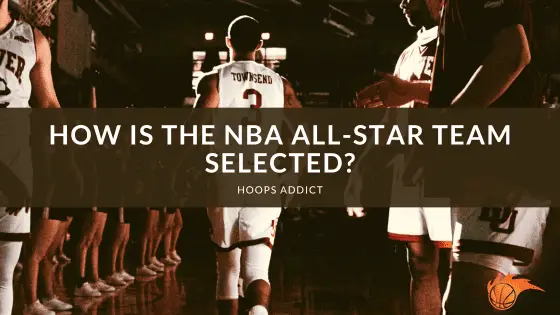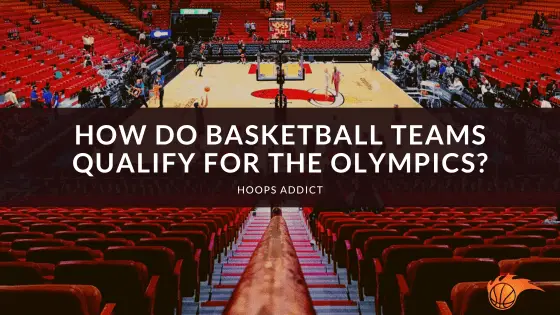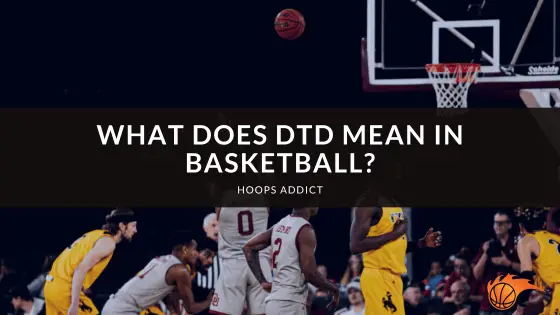On the surface, NBA trades may seem easy to pull off but the intricacies of NBA trades go beyond your average twitter take.
Trades are governed by rules that ensure NBA teams are under the league’s salary cap.
But why does it seem like some teams can build a roster featuring four to five superstars? Well, that is because the league enforces a soft salary cap. With this, teams can avail of NBA exceptions like the mid-level exception. This NBA salary cap exception would allow eligible teams to go beyond the salary cap for a specific condition.
 How Do NBA Trade Exceptions Work?
How Do NBA Trade Exceptions Work?
Contrary to popular belief, the term “Trade Exception” isn’t contained in the overarching business rulebook of the NBA called the Collective Bargaining Agreement or CBA. However, trade exceptions are essential in keeping teams competitive, even if there’s a league salary cap.
Trade exceptions give teams and players the power to negotiate money without worrying about going over the cap. However, the team involved must meet specific conditions to apply for these exceptions. Different trade exceptions work differently, but overall, they work by giving teams condition-specific passes to go beyond the salary cap.
Apart from the Mid-Level Exception, which we’ll discuss in detail in this article, there are also other NBA salary cap exceptions that general managers can avail of:
- Veteran Free Agent Exceptions or Bird Rights (Qualifying, Early, or Non-Qualifying)
- Traded Player Exception
- Rookie Exception
- Minimum Player Salary Exception
- Disabled Player Salary
Each of these exceptions works differently but is mostly scenario-based. For example, the Veteran Free Agent Exceptions or Bird Rights allow teams to offer big and go beyond the salary cap to keep players with expiring contracts.
A different situation may call for a different exception, such as the Bi-Annual Exception, which teams can only avail once every two years. This exception is usually taken by teams who are desperate to fill their roster with an available asset — like a veteran willing to take a massive pay cut just to be rostered by a contender.
 What is Mid-Level Exception in NBA?
What is Mid-Level Exception in NBA?
The Mid-Level Exception, or MLE, is perhaps the league’s most used NBA trade exception. Among all the exceptions, the Mid-Level Exception gives the most flexible options regarding eligibility and salary power.
In essence, the Mid-Level Exception allows teams to sign players above the minimum salary even if that team has already exceeded the salary cap. However, there are fundamental differences between the MLE and some other exceptions in the NBA.
The MLE eligibility requirements are focused on the team — mainly if they are below the salary cap, above it, or near the tax apron. The MLE also allows teams to offer a contract of 2-4 years for $10,349,000, depending on the team’s eligibility.
So, is there a limit to how much a team can exceed the salary cap? Technically, no, but the NBA has a way of limiting the spending power of the teams through their respective luxury taxes. Instead of strictly limiting the salary cap, the NBA’s tax apron is the rigid boundary for the team’s expenses. The tax apron amounts to around $156,983 Million this season.
 Types of Mid-Level Exceptions
Types of Mid-Level Exceptions
The type of MLE that an NBA team can get depends on their status with the salary cap. The teams’ eligibility for MLE depends on whether they are above or below the tax apron. There are three types of Mid-Level Exceptions, and teams are only allowed to avail of one of them.
Here are the three types of Mid-Level Exceptions:
- Cap-Room Mid-Level Exception: The Cap-Room MLE can be availed by teams below the salary cap. This MLE has the lowest value and is meant to act as a buffer only for teams looking to spend but not exceed the salary cap by a ton.
- Taxpayer Mid-Level Exception: The Taxpayer MLE can be availed by teams beyond the salary cap and close enough to the tax apron that they’ll exceed it after signing a player. With that said, this MLE is often used by the big spenders who need low-salary contracts to fill up spots and sign willing players.
- Full Mid-Level Exception or Non-Taxpayer MLE: As the name suggests, this MLE gives the whole value of an exception for the season. To be eligible for this, the team has to be above the salary cap but are low enough in terms of luxury taxes that they won’t exceed it despite signing a $10M player.
 How Much is the Mid-Level Exception Worth?
How Much is the Mid-Level Exception Worth?
Each type of MLE has a different worth. As explained in the previous section, the Cap-Room MLE has the lowest value, while the Full MLE has the most significant amount. But how much exactly are they worth?
As of the 2022-2023 season, a Cap-Room MLE is worth $5,329,000, and teams with this exception can sign a player for a maximum of two years. For teams with Taxpayer MLE, a contract is worth $6,392,000, and they can sign that player for a maximum of 3 years. Lastly, teams with a Full MLE can offer a contract of $10,349,000 for up to four years.
Every year, the NBA adjusts the value of the exceptions, including the MLE. More often than not, the value of a Mid-Level Exception increases because the salary cap of the NBA also increases to make up for other economic factors outside the league.
 Which Teams Have the Mid-Level Exception?
Which Teams Have the Mid-Level Exception?
Technically speaking, all teams are eligible for a Mid-Level Exception. However, some teams qualify for Cap-Room MLE, others for Taxpayer MLE, and others for Full MLE. The better question is what teams are qualified for what MLE, and how much of it have they spent already?
Let’s see each MLE type and which teams have qualified for it.
Cap-Room Mid-Level Exception
- Detroit Pistons
- Indiana Pacers
- New York Knicks
- San Antonio Spurs
This season, all four teams have yet to use a single dollar out of their MLEs.
Taxpayer Mid-Level Exception
- Milwaukee Bucks: Used $6,479,000 to sign Joe Ingles this season
- Los Angeles Lakers: Used $6,479,000 to sign Lonnie Walker this season
- Los Angeles Clippers: Used $6,479,000 to sign John Wall this season
- Golden State Warriors: Used $4,500,000 to sign Donte DiVincenzo and $1,017,781 for Ryan Rollins this season
- Denver Nuggets: Used $6,479,000 to sign Bruce Brown this season
- Dallas Mavericks: Used $5,461,219 on JaVale McGee and $1,017,781 on Jaden Hardy this season
- Boston Celtics: Used $6,479,000 to sign Danilo Gallinari this season
The Brooklyn Nets and Phoenix Suns have not used their Taxpayer MLE this season.
Full Mid-Level Exception
- Chicago Bulls: Used $3,200,000 to sign Andre Drummond
- Cleveland Cavaliers: Used $5,853,659 to sign Ricky Rubio
- Houston Rockets: Used $2,717,391 to sign Bruno Fernando
- Memphis Grizzlies: Used $1,200,000 to sign Kennedy Chandler
- Miami Heat: Used $6,479,000 to sign Caleb Martin
- Minnesota Timberwolves: Used $8,780,488 to sign Kyle Anderson and $1,017,781 for Josh Minott
- Oklahoma City Thunder: Used $2,000,000 for Jaylin Williams and $1,836,090 for Isaiah Joe
- Orlando Magic: Used $2,000,000 to sign Caleb Houston
- Philadelphia 76ers: Used $10,490,000 to sign PJ Tucker
- Portland Trail Blazers: Used: $8,300,000 to sign Gary Payton II and $1,017,781 for Jabari Walker
- Sacramento Kings: Used $9,472,219 to sign Malik Monk
- Toronto Raptors: Used $6,000,000 on Otto Porter Jr. and $1,500,000 for Christian Koloko
- Utah Jazz: Used $3,205,128 to sign Simone Fontecchio
- Washington Wizards: Used $7,804,878 to sign Delone Wright
The Atlanta Hawks, Charlotte Hornets, and New Orleans Pelicans have not used their MLE.
 What Happens When an NBA Team Goes Over the Salary Cap?
What Happens When an NBA Team Goes Over the Salary Cap?
Going over the salary cap is something that NBA teams are not worried about because the league has a soft salary cap that teams can regularly exceed via exceptions. In fact, the league encourages the owners to go over the salary cap so their teams can avail of higher mid-level exceptions and sign more or better players.
Once a team goes over the salary cap, they will be taxed by the league and what teams should be wary of is reaching the tax apron set by the league. This cap cannot be exceeded by any means, and there are no exceptions.
If a team exceeds the apron, they will be restricted from taking any more exceptions and prohibited from participating in trades that will further incur expenses.
Wrapping Things Up: What Does the Mid-Level Exception Mean?
The Mid-Level Exception is one of the exceptions that NBA teams can make to sign players even if the team has exceeded the salary cap. The NBA has a soft salary cap which is why these exceptions are allowed in the first place.
There are three types of MLEs — Cap-Room, Taxpayer, and Non-Taxpayer or Full MLE. Different MLEs have different qualifications, and teams may only be eligible for one. Currently, nine out of the 30 NBA teams have yet to use their MLE provisions this season.
Exceptions like the MLE are essential tools in an NBA General Manager’s belt to create a competitive team. So, the next time you generate a trade for your favorite NBA team, put these provisions in the equation.
We hope you enjoyed this post! If you did, be sure to check out our other basketball FAQ articles here.

 How Do NBA Trade Exceptions Work?
How Do NBA Trade Exceptions Work? What is Mid-Level Exception in NBA?
What is Mid-Level Exception in NBA? Types of Mid-Level Exceptions
Types of Mid-Level Exceptions How Much is the Mid-Level Exception Worth?
How Much is the Mid-Level Exception Worth? What Happens When an NBA Team Goes Over the Salary Cap?
What Happens When an NBA Team Goes Over the Salary Cap?

